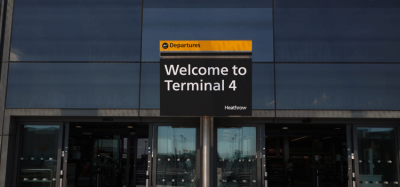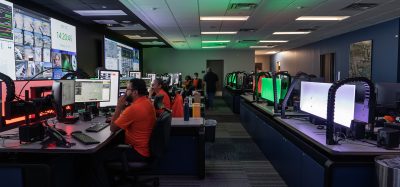Trialling large-scale biometric systems
Posted: 6 February 2007 | H. Carr-Archer, Director, International Association for Biometrics (IAFB) | No comments yet
Great expectations burden the biometrics industry. It’s difficult to conceive of a future for air travel in which they are not relied upon for security and passenger processing, but the timescale has been hazy. All that may soon change. The UK’s largest biometric trial was recently carried out at Heathrow, testing a system for the processing of all travellers, not only frequent flyers; the future may be a step closer.
Great expectations burden the biometrics industry. It’s difficult to conceive of a future for air travel in which they are not relied upon for security and passenger processing, but the timescale has been hazy. All that may soon change. The UK’s largest biometric trial was recently carried out at Heathrow, testing a system for the processing of all travellers, not only frequent flyers; the future may be a step closer.
Biometric systems have been deployed in a significant number of airports in recent years. These systems have usually been aimed at speeding the processing time at airports for frequent fliers. Many have used iris systems renowned for their accuracy. A particular set of business requirements have driven these schemes. Amongst them has been the recognition that a frequent flyer will only be enrolled on to the system once and may then be checked on many future occasions. Consequently, the time taken to enrol is not a major business requirement.
This article looks at probably the largest trial at an airport in the UK, perhaps in the world. Before going on to describe the trial it is worth emphasising that this was not for frequent fliers. It was to test the deployment of an appropriate system for the throughput of all passengers and the biometric data would not be kept after 24 hours. Consequently, processing time (both for enrolment and subsequent checking) was vital and passengers queuing up around the M4/M25 nearby motorways had to be avoided!
Setting the scene
The United Kingdom continues to address a wide range of security challenges, foremost among which are terrorism and illegal immigration. An effective response to these challenges requires control and identification of individuals at points of entry into and exit from the UK, such as airports. Immigration control has traditionally been assisted by the physical separation of international and domestic passengers in the airport environment. However, recent advances in biometric identity management solutions, such as face, finger and iris recognition technologies, have now opened up the possibility of logical separation in the airport environment.
BAA is planning to introduce an Integrated Departure Lounge (IDL) to Heathrow Terminal 1 (T1). The new Terminal 5 (T5) building at Heathrow has also been designed around an IDL which will become operational in 2008. Within an IDL, domestic and international passengers can freely mix. There is therefore a requirement to ensure that passengers who enter the IDL as domestic passengers leave on domestic flights and those who enter as international passengers leave on international flights. BAA currently has a photograph based system in operation at Gatwick to fulfil this requirement, but this needs a human presence to make all decisions regarding the identity of the individual presented before them.
Whilst biometric technologies are now reasonably well proven for ‘fast tracking’ regular flyers on an individual basis, there is little research of substance available to assess the accuracy, speed and reliability of biometric solutions deployed in a high volume, rapid passenger processing environment such as an airport. BAA therefore commissioned a Trial to examine the performance of a range of biometrics, namely Face (2D and 3D), Iris, Fingerprint and Palm Vein Recognition systems.
The requirement
BAA, in consultation with key stakeholders such as British Airways, produced a set of requirements, which would have to be satisfied by any production system. These requirements included:
- The certainty of match produced by the system (accuracy). Certainty was categorised as a specific threshold not to be exceeded for the False Accept Rate (FAR), False Reject Rate (FRR) and Failure to Enrol Rate (FTER)
- The total time taken to process individual passengers at entry to and exit from an IDL (speed). The Failure to Enrol Rate (FTER) threshold was also specified
- Ease of use for both passengers and security staff (usability);
- The ability of each system to function within the physical environment of an airport terminal;
- Performance within the BAA standard IT infrastructure.
Conduct of the trial
The Trial, one of the most comprehensive of its type in the UK, ran from September 2005 to March 2006. More than 12,000 people were processed over the period. This provided a wealth of valuable operational data to help BAA determine its optimum IDL strategy for Heathrow T1 and T5. The Trial, managed and executed on behalf of BAA by Advantage System Solutions Ltd, sought principally to assess system performance (accuracy, speed, usability) and passenger reaction to each type of biometric. It also examined whether current biometric technologies were capable of meeting BAA’s specified operational requirements over the long term.
- Phase 1 involved a short system familiarisation phase on Iris and Facial Recognition (2D and 3D), involving processing of low volumes of volunteer BAA staff.
- Phase 2 continued with Iris and Facial Recognition (2D and 3D). It ran with low volumes of genuine passengers. BA’s premium check-in zone (Zone R) in Heathrow Terminal 1 was used as the location for this test.
- Phase 3 involved Facial Recognition (2D and 3D) only. This phase was conducted with larger volumes of passengers in the main domestic departure area of Heathrow Terminal 1. The final part of this phase included a ‘spoofing’ element to test system accuracy. The aim of this type of testing was to establish if basic changes to the appearance of the person between enrolment and verification/identification could change the results. For example, scarves, hats, glasses and different facial expressions were employed to see if basic ‘disguises’ could fool the system.
- Phase 4 included Palm Vein and Fingerprint Recognition solutions involving processing of low volumes of volunteer BAA staff.
- Phase 5 was conducted using Fingerprint Recognition only with larger volumes of passengers in the main domestic departure area of Heathrow Terminal 1. (The final part of this phase also included a ‘spoofing’ element to test system accuracy).
The Trial was conducted on a voluntary basis with the aim of ensuring that a representative cross sample of the passenger population took part. Every effort was made to encourage people from different ethnic backgrounds and with physical differences and disabilities to participate.
There were two key timings which were central to measuring the success of any system. The first was the Biometric Transaction Time (BTT) which was the data processing needed to create or validate a biometric transaction. The second was the Target Passenger Processing Time (TPPT) which was a combination of the BTT and all the human activities needed to complete the biometric transaction (e.g. positioning). These latter activities became known during the trial as the ‘Fumble Time’ (FT).
Key findings
The Trial findings focused on three areas: speed, accuracy and usability.
Speed: The ‘Fumble Time’ of passengers (e.g. positioning correctly, finding their documentation etc.) was the most significant factor driving the overall time to process queues of individuals. Although none of the systems trialled quite met the TPPT, improvements to speed will certainly be achieved through: improved ergonomics of the user station; improved passenger preparation; improved camera technology; faster processing of data; and design of a fully productised solution which is integrated seamlessly within BAA’s Common User Lounge System (CULS).
Accuracy: Of the systems tested, marginally the most accurate system was the Facial recognition technology, which had the best overall balance between FTER, FAR and FRR. Whilst no conclusive data regarding the demographics of those that failed to enrol could be determined conclusively from this trial, valuable indications of likely problem areas were identified. Modelling of system accuracy rather than biometric accuracy would be of benefit in future trials. This modelling could incorporate all of the factors that might affect system accuracy, such as the likelihood of an illegal entry attempt or possibly a system failure.
Usability: The vast majority of user comments were positive and encouraging. People were willing to embrace biometric technology to improve passenger processing into and out of an IDL. It appeared from the user feedback that the facial systems were marginally more agreeable to the public than other biometric systems.
Conclusions
There were a number of lessons learnt during this trial. The main outcome was the decision that biometrics could meet the needs of a busy airport for passenger verification. The trial also helped display the various strengths of each different biometric and provided data on speed, accuracy and usability. Different requirements will result in different biometric choices by future decision makers in this market space. Probably the most significant finding was that the ‘Fumble Time’ (FT) was the greatest challenge. With the necessity to process passengers very rapidly, this FT factor, rather than the actual biometric transaction, is the area where careful thought and planning will result in the most significant savings of time. We understand that a system has been selected by BAA and further information may be forthcoming in a future article.
The International Airport Summit is open for registration!
Date: 19 – 20 November 2025
Location: JW Marriott Hotel Berlin
At our flagship event of the year, we will dive into the future of airport operations, with expert-led sessions on passenger experience, innovative smart technologies, baggage handling, airside operations, data, security, and sustainability.
This is where global airport leaders come together to share insights, challenges, and real-world solutions.
Limited complimentary passes are available for eligible professionals – first come, first served!


















